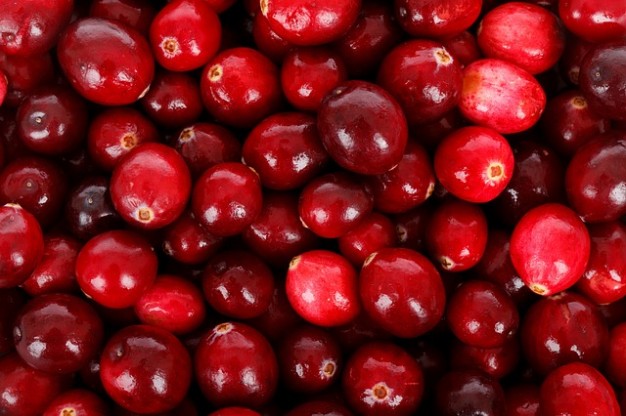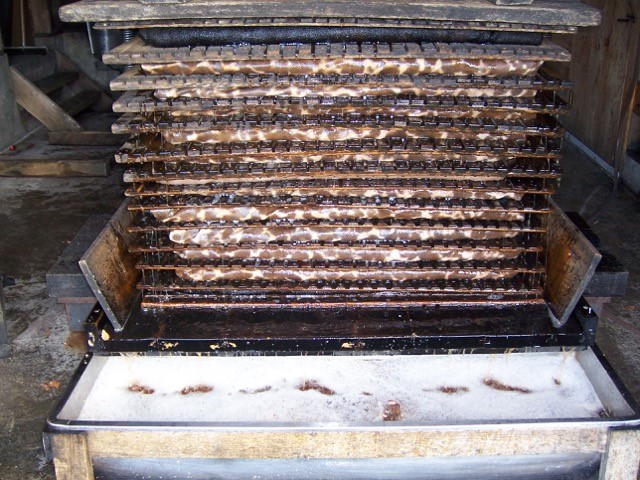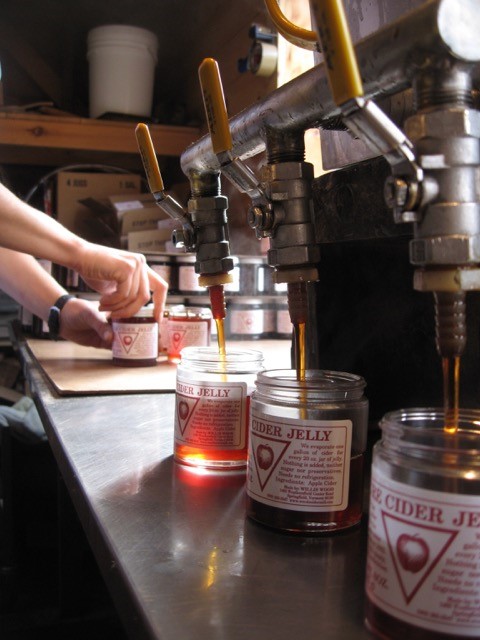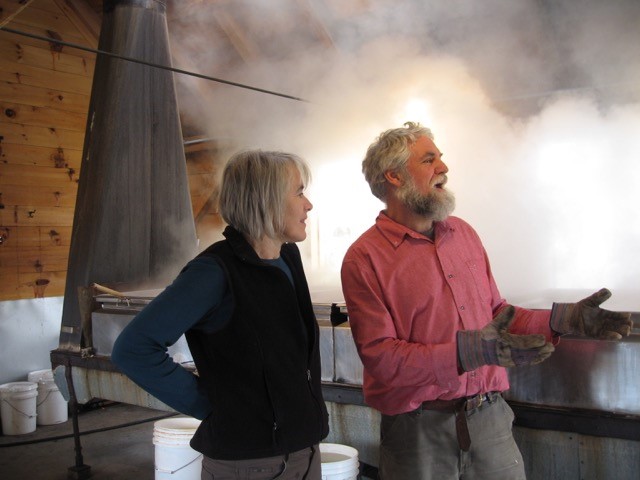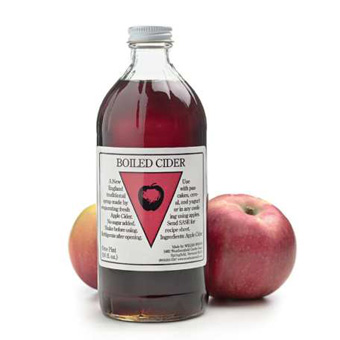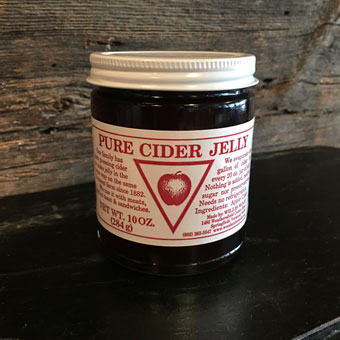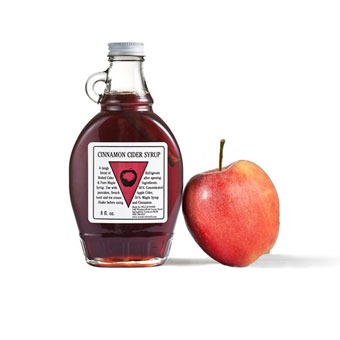Sticking with Tradition
With the goal of creating innovative, natural, healthful, and exciting cranberry products, New England Cranberry is making tasteful use of Massachusetts’ native crop. For 25 years, the same recipe has served as the company’s cornerstone. Colonial Cranberry Sauce was developed from a recipe used during the American Colonial era.
“When you’ve got something good, there’s no reason to stray,” says owner Allison Goldberg. “There is fancier packaging and there are products you can pay much more for, but that is not us. Are we the biggest? No, but I’d put my products up against anyone’s.
“We are New England folk; Puritans who get down to business and do a good job. We are no bells and whistles, and ‘the way it’s always been.’ If you compare us to a dining experience, you can think of us as the restaurant that may not be as fancy, but that you go back to again and again because it never disappoints—tried and true. We were making specialty foods before that was a term. I’m so passionate about what I do because these products are just plain good.”
When I caught up with Goldberg, she was knee-deep in cranberry season. The harvest is generally in September, and with Thanksgiving just a couple of weeks away, “it’s all hands on deck.” As we talked, she was packing and taping boxes. “We send out thousands annually.”
Whole Berries Yield a Whole Lot of Flavor
Goldberg laughs, “I like to say, ‘I don’t make your make your turkey sandwich. I make it better.’ Our Cranberry Pepper Jelly makes turkey sandwiches the best. The great thing about ours as opposed to other pepper jellies I’ve tried is that it is not so hot that the flavor becomes dominated by the heat. There’s a great balance that enhances the flavor, ‘Spicy but Not Too Hot’ as the packaging says.” Made with piquant red pepper, it pairs perfectly with creamy cheeses.
And they must be doing something right, because the states where the Cranberry Pepper Jelly is the most popular are those where the populace definitely knows a thing or two about heat. “We ship more to Texas and Louisiana than anyplace else.”
Another one of their most popular items is Cranberry Chutney, which brought me to the question of exactly what differentiates chutney from jelly or jam. “Vinegar,” Goldberg said. Vinegar is the preservative. Chutney has its roots in a time before refrigeration. Think Indian chutneys in warm weather. We have walnuts in ours and they lend our ‘secret ingredient,’ a little acidity and richness from fat and oil. My two favorite things to pair with our Chutney are chicken and meatballs.
“Jelly is made from the juice of the fruit, jam or preserves use the whole fruit, and marmalade comes from citrus fruits. Cranberries have a lot of pectin and our product pours right out. It is not at all like the canned stuff.”
You’ll also love their Cranberry Bog Honey, a gift from bees that buzz around New England cranberry blossoms.
In all their products, New England Cranberry uses whole berries. “It is important to us to keep the integrity of the fruit itself. Cranberries are a superfood, with tons of antioxidants. Also, they’re one of the only fruits indigenous to our country and vital to our local economy. We work hard to honor all of this. When environmental factors impact local harvests and our ability to get local berries, we still try to stay as close to home as possible.”
Try The Savory Pantry’s recipe for creamy, spicy Cranberry Pepper Jelly Cups.
Entrepreneurial Journey
Although she is a Massachusetts native, Goldberg didn’t grow up in the cranberry business.
“In 2006, we were living in Chicago and I was ten months pregnant. We wanted to move home to Massachusetts, and were looking for a business to buy. Believe it or not, we actually found it for sale through AOL! It was then owned by a gentleman who was a lawyer by trade and absolutely loved cranberries. He’d done tons of research and came up with the original recipe, but didn’t want to continue running it.
“When we bought it, there were six products and now we’ve grown the business to more than fifty. We inherited a lot of the business relationships that continue to this day. For example, we still have the same bottlers and they are also a family business.”
And Goldberg shares that they have definitely put “family” in New England Cranberry over the years. “My husband, Ted, also works in the business. We bought the company two weeks before our son Julian, now 15, was born. Julian is older and stronger now, and works in the warehouse. He gets paid, so if he wants an expensive pair of sneakers, he can save up and buy them himself. It is so important to us as parents that our children understand what hard work is, what their parents do every day and where they go. My father and my mother both had their own businesses and my siblings and I got paid to do work for them . . . but we did do it a little begrudgingly! Our daughter Chloe is 12. She’s been in the office from day one. We used to set up a little nursery for her to play while we worked. I look back to that time with her as a baby and realize at that point, I thought I could do everything. But really, you have to make some choices. You have to find what works best for you by no one else’s definition but your own.”
Goldberg’s daughter, Chloe, makes pigs in blankets with Cranberry Pepper Jelly.
Thanksgiving Traditions
When I asked Goldberg about their own family traditions, she said that she and her husband took over the big meal from her parents a few years back. “We thought, ‘You know what? We can make the meal anything we want and don’t have to stick to the same recipes our parents did. One year I ended up simmering the cranberry sauce with orange and cinnamon, and that ended up becoming a New England Cranberry product. But with other dishes we strayed on, there are such expectations that we found ourselves returning to the original family recipes. For the turkey, I don’t do anything complicated. Just a roasted turkey with salt, pepper, butter, and paprika. I buy a good bird and go from there.”
“Of course, for many people, the leftovers are the best thing about the Thanksgiving meal. My very favorite thing is to make a sandwich of turkey, Cranberry Pepper Jelly, Brie, and sliced green apple. There is something magical about that combination because it’s got the chewiness of the bread and turkey, the spice of the pepper jelly, the creamy of the brie, and the crunch of the apple. It is just so good.”
Leftovers
When I dropped the final roundup question, “Is there anything else you’d like to add,” Goldberg responded with the tone of kindness and gratitude I get the sense is always her currency.
“I am so thankful to The Savory Pantry customers for recognizing the authentic quality of our products. That’s loyalty and I’m glad that we’re seen as a valued brand. I am so grateful to think that we are on family’s tables, and that more than anything, we help make delicious-tasting memories.”

